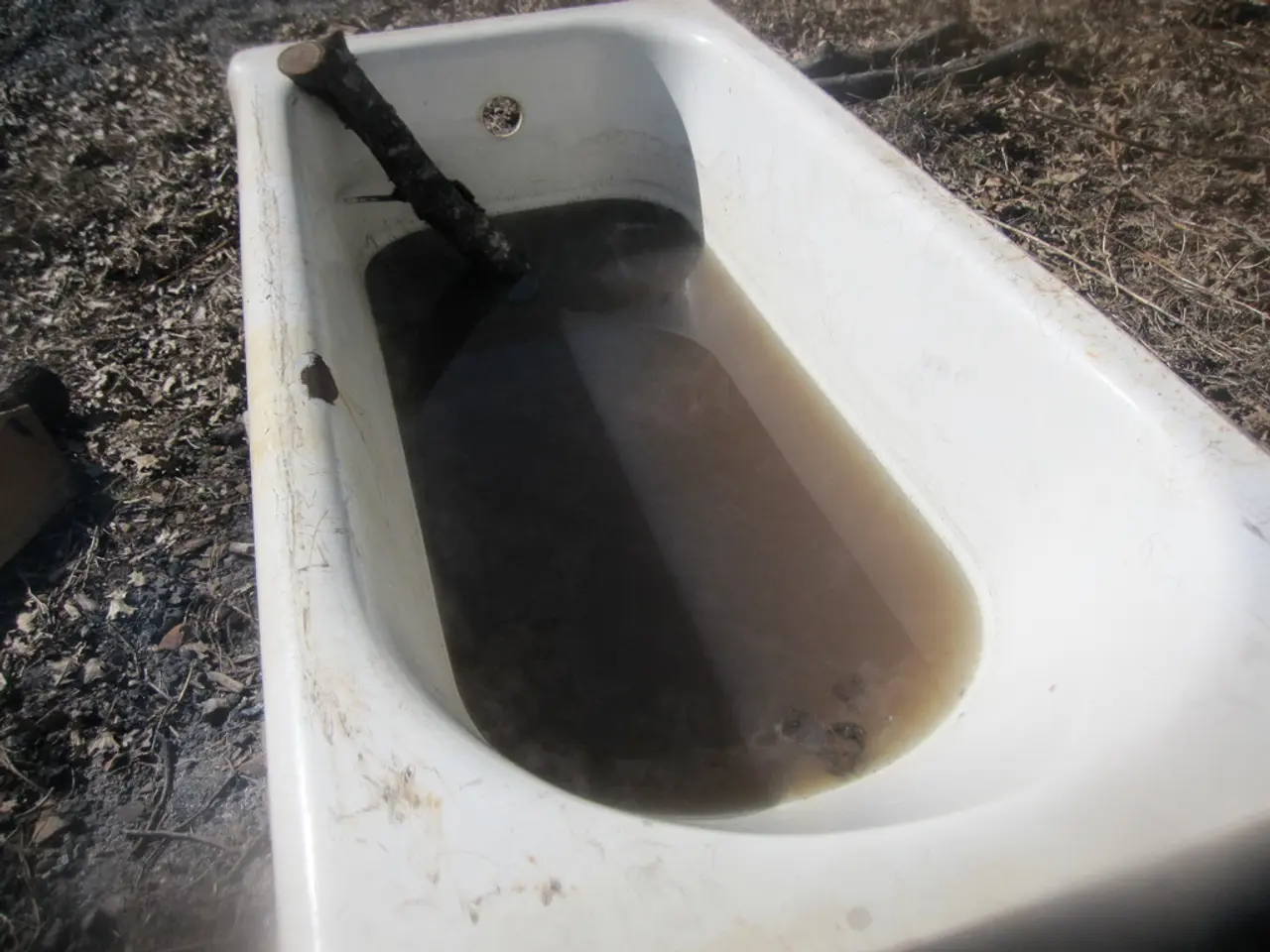Arthritis relief via hot tub: Discussing benefits, potential risks, and alternative solutions
Hot tubs, popular for relaxation and leisure, can also offer significant benefits for individuals suffering from arthritis. By immersing in warm water, arthritis patients may experience symptom relief and improved joint function.
Benefits of Hot Tub Use for Arthritis
Hot tubs provide a unique environment that offers several advantages for arthritis sufferers:
- Reduction in joint pain and stiffness: Warm water increases blood flow, delivering oxygen and nutrients to muscles and joints, which helps reduce inflammation and stiffness.
- Buoyancy reduces joint pressure: The water’s buoyancy supports the body and lessens load on weight-bearing joints (hips, knees, ankles), making movement easier and less painful.
- Improved mobility and flexibility: Heat and reduced joint pressure facilitate gentle stretching and movement, which can enhance range of motion over time.
- Muscle relaxation and tension relief: The warmth relaxes muscles, easing tension and promoting better joint movement.
- Enhanced circulation: Heat causes vasodilation, improving blood circulation which supports cardiovascular health and tissue healing.
- Low-impact exercise platform: Hot tubs allow for gentle joint-friendly exercises that help strengthen muscles around joints without strain.
- Emotional well-being: The soothing environment can reduce stress and improve overall quality of life for those with arthritis.
Potential Risks of Hot Tub Use for Arthritis
While hot tubs can provide relief, it's essential to be aware of potential risks:
- High temperature risks: Excessive heat (above recommended levels of about 98-104°F or 37-40°C) can cause dizziness, overheating, or cardiovascular stress, especially in those with heart conditions or high blood pressure.
- Skin irritation or infection: Prolonged exposure or poorly maintained hot tubs may cause skin irritation or increase the risk of infections.
- Exacerbation of inflammation: While hot tubs relieve symptoms, they do not alter arthritis disease progression. In some cases, overheating inflamed joints could worsen symptoms temporarily.
- Precautions for certain conditions: Individuals with certain health issues (such as uncontrolled hypertension, pregnancy, or severe cardiovascular disease) should consult a doctor before hot tub use.
Considerations for Hot Tub Use
Hot tubs can be a safe and practical way to alleviate arthritis symptoms, improve joint function, and support general well-being when used properly and at appropriate temperatures. However, users should be mindful of risks and consult healthcare providers as needed.
Other forms of heat therapy, such as taking a warm shower, bathing in warm water, stretching after heat therapy, applying heat packs, trying a paraffin bath, applying mineral oil and heat, therapeutic ultrasound, and diathermy, may also help ease arthritis symptoms.
For those with specific conditions, such as PsA or Pregnancy, it's crucial to seek medical advice before using a hot tub. A 2018 study comparing standard care for RA with standard care plus spa therapy found significant improvements in joint swelling with the spa therapy intervention. Additionally, a study involving 46 participants with knee osteoarthritis found that heat application statistically decreased KO pain and disability, and led to improvements in physical function, general health perception, and quality of life.
Hot tubs offer a unique and beneficial addition to arthritis management, but users should always prioritise safety and proper use to maximise the benefits while minimising potential risks.
[1] Arthritis Foundation. (2021). Hydrotherapy. Retrieved from https://www.arthritis.org/living-with-arthritis/treatments/natural/other-therapies/hydrotherapy/ [2] Mayo Clinic. (2020). Hydrotherapy. Retrieved from https://www.mayoclinic.org/tests-procedures/hydrotherapy/about/pac-20394881 [3] National Health Service (NHS). (2020). Hydrotherapy. Retrieved from https://www.nhs.uk/conditions/hydrotherapy/ [4] WebMD. (2021). Hydrotherapy. Retrieved from https://www.webmd.com/pain-management/guide/hydrotherapy [5] Centers for Disease Control and Prevention (CDC). (2020). Hot Tubs and Spas. Retrieved from https://www.cdc.gov/healthywater/swimming/pools-spas/hot-tubs-spas.html
- Beyond arthritis, hot tubs may offer significant advantages for those suffering from chronic diseases like psoriatic arthritis (PsA) or psoriasis, as studies have shown improvements in joint swelling and overall condition.
- In the realm of workplace-wellness, hot tubs can be integrated as a means to aid employees suffering from medical conditions, especially those with arthritis, promoting better mobility and emotional well-being.
- Aside from heat therapy, fitness-and-exercise, such as low-impact aerobics, strength training, and walking, also contribute to managing arthritis symptoms and promoting health-and-wellness.
- Integrating skin-care routines, like the regular application of CBD oil, can complement therapies-and-treatments for arthritis, potentially reducing inflammation and promoting better joint function.
- Mental health becomes equally important in arthritis management, with stress-reduction techniques like meditation and yoga bolstering the overall quality of life for individuals with arthritis.
- Nutrition plays a crucial role in maintaining a healthy body, with anti-inflammatory foods like fish, fruits, vegetables, and nuts helping combat arthritic symptoms and chronic diseases.
- When considering the purchase or use of a hot tub, users should be aware of the potential risks associated with high temperature, skin irritation, and infection, and prioritize safety and appropriate use.
- Seeking medical advice before using a hot tub is essential for those with specific health conditions like pregnancy, heart diseases, or uncontrolled high blood pressure to avoid complications and minimize risks.
- Science continues to explore new therapies-and-treatments for arthritis, including stem cell therapy, gene therapy, and pharmacological interventions, aiming to improve symptomatic relief and slow disease progression.




